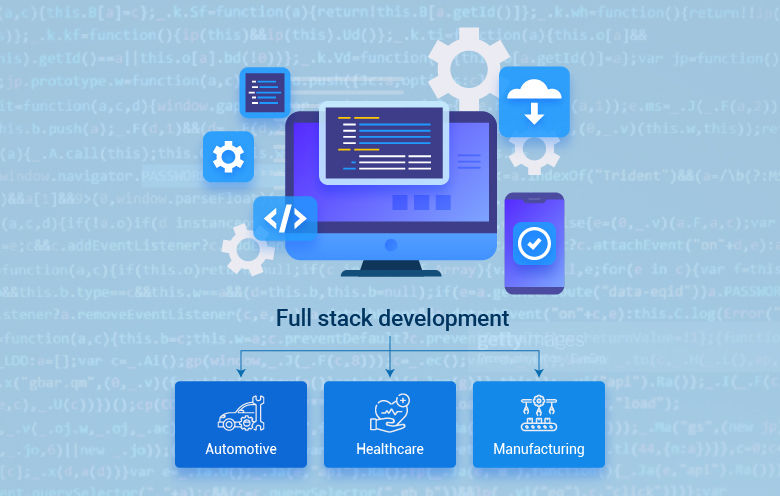How to Choose the Right Full Stack Development Framework
- Vaishali pal

- Mar 4, 2024
- 3 min read

Introduction:
Full Stack Development has become an integral part of modern web application development, demanding proficiency in both frontend and backend technologies. Choosing the right full stack development framework is crucial for building scalable, efficient, and maintainable applications. With so many options at their disposal, developers frequently find themselves in a difficult situation. In this article, we will delve into the key considerations for selecting the right full stack development framework.
Understanding Full Stack Development:
Working on a web application's client-side (frontend) and server-side (backend) is a component of full stack development. The frontend deals with the user interface and user experience, while the backend manages the server, database, and application logic. A full stack developer should be adept at a combination of technologies and frameworks that seamlessly integrate these components.
Key Considerations:
Technology Stack Compatibility:
Before choosing a full stack development framework, it's essential to ensure that it supports the technologies you plan to use. Check for compatibility with frontend technologies like HTML, CSS, and JavaScript, as well as backend languages such as Python, Java, or Node.js. Compatibility ensures smooth integration and collaboration between frontend and backend components.
Scalability:
Consider the scalability requirements of your project. A good full stack framework should facilitate scalability, enabling your application to handle increased loads and traffic. Evaluate the framework's ability to scale horizontally and vertically to meet the evolving demands of your application.
Community Support:
A thriving community is indicative of a robust and well-maintained full stack framework. A supportive community provides access to a wealth of knowledge, resources, and third-party libraries. Check forums, online communities, and social media to gauge the framework's popularity and the responsiveness of its community.
Documentation:
Clear and comprehensive documentation is crucial for developers to understand and effectively use a framework. A well-documented full stack framework accelerates the learning curve, making it easier for new team members to onboard and troubleshoot issues. Evaluate the documentation provided by the framework's developers to ensure it meets your team's needs.
Security Features:
Security is paramount in web development. Assess the security features offered by the full stack framework, including data encryption, authentication mechanisms, and protection against common vulnerabilities. A robust security framework is vital to safeguard sensitive user data and ensure the integrity of your application.
Development Speed:
Time-to-market is a critical factor in today's fast-paced development landscape. Evaluate the full stack framework's development speed by considering features like code generation, scaffolding, and built-in templates. A framework that streamlines development processes can significantly reduce time and effort.
Community Ecosystem:
Consider the ecosystem surrounding the full stack framework. Check the availability of plugins, extensions, and integrations with other tools and services. A rich ecosystem enhances the functionality of the framework and allows developers to leverage existing solutions for common tasks.
Learning Curve:
Assess the learning curve associated with the full stack framework. While a powerful framework may offer advanced features, a steep learning curve can hinder productivity. Balance the capabilities of the framework with the skill set of your development team to ensure a smooth adoption process.
Flexibility and Customization:
Different projects have different requirements. A flexible full stack framework should allow customization according to the specific needs of your project. Evaluate the degree of flexibility the framework provides in terms of architecture, modules, and configurations.
Conclusion:
Choosing the right full stack development framework is a pivotal decision that impacts the success of your web application. By considering factors such as technology stack compatibility, scalability, community support, documentation, security features, development speed, community ecosystem, learning curve, and flexibility, you can make an informed decision tailored to the unique requirements of your project. Enrolling in a comprehensive Full Stack Developer Course in Mumbai, Vadodara, Agra, Thane, Navi Mumbai, Delhi, Noida & all cities in India. Can further enhance your skills and understanding of the chosen framework, providing you with a competitive edge in the rapidly evolving field of web development. It's crucial to stay abreast of the latest developments in the web development landscape to ensure your chosen framework remains relevant and well-supported in the long run.


